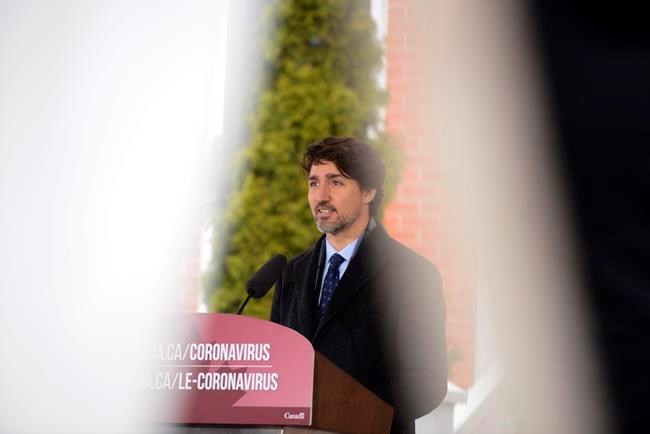TORONTO — More signs the spread of COVID-19 is slowing in Canada emerged on Wednesday, prompting further talk of easing the isolation measures that have proven economically crippling.
The country's largest province, for example, reported its slowest growth in identified COVID cases in weeks — 510 or a daily increase of 4.3 per cent. Ontario also reported 37 new deaths, bringing the total to 659 deaths on a caseload of 12,245.
Also encouraging was the fact that the percentage of resolved infections in the province surpassed the 50 per cent mark for the first time.
Premier Doug Ford has mused Ontario could start easing restrictions ahead of next month's long weekend if the moderating trend holds. Premier Dennis King of Prince Edward Island, which has had just two dozen cases, no deaths, and no new reported cases — has also said a gradual lifting of anti-COVID measures could start as early as May 1.
Quebec Premier Francois Legault, whose province reported 93 more deaths, said he would present a plan next week to reopen schools gradually, starting in areas where the situation was most stable.
Chief Public Health Officer Dr. Theresa Tam said Canada was making progress in slowing the epidemic but warned against letting down its guard. The focus, Tam said, must be placed on stopping outbreaks in places like seniors homes and in other places where vulnerable populations live together in close quarters.
Legault called on Ottawa to send 1,000 military personnel to help in Quebec's badly hit and understaffed long-term care homes. Ford similarly asked for military help.
How exactly Canada gets on the road to normalization will largely depend on the provinces, Prime Minister Justin Trudeau said on Wednesday. However, the closure of the Canada-U.S. border will stay in place until May 21st at least, he said.
Regardless, the financial fallout of the anti-COVID measures — social isolation and the shut down of non-essential commercial activities — has been profound. Trudeau, who had already announced more than $100 billion in various forms of assistance, offered more financial supports on Wednesday.
A total of $9 billion would go to students who lacked access to previously announced emergency assistance. Students will receive $1,250 a month from May to August under the program.
"As young people, what you're going through matters," Trudeau said. "We want to make sure that you will be OK."
In addition, the government said it would create 76,000 new summer jobs for young people in sectors that "need an extra hand."
The economic impact of the epidemic was seen on the inflation front, where Statistics Canada reported the consumer price index for March was up a scant 0.9 per cent compared with a year ago. That was the smallest increase since May 2015 and compares with the 2.2 per cent annualized rate recorded in February.
The government planned to announce its fiscal update for February on Friday — including a deficit number bound to look microscopic compared to the tsunami of red ink unleashed by a pandemic that forced the economy to a virtual standstill in mid-March.
The prime minister also pledged unspecified aid for older Canadians whose finances have taken a hit.
"Yes, there is help coming for seniors," he said.
Globally, the grim pandemic toll continued to mount, with New York City alone reporting almost 15,000 deaths — the fifth highest number of fatalities after Italy, Spain, France and the U.K. COVID has killed more than 45,000 people in the U.S.
On a more optimistic note, New Zealand, with about 1,500 cases and 14 deaths — said it was moving to a Level 3 alert next week from the highest Level 4 now in place, meaning the gradual reopening of some businesses and schools, and the easing of some travel restrictions.
— With files from Canadian Press reporters across the country.
This report by The Canadian Press was first published April 22, 2020.
Colin Perkel, The Canadian Press



